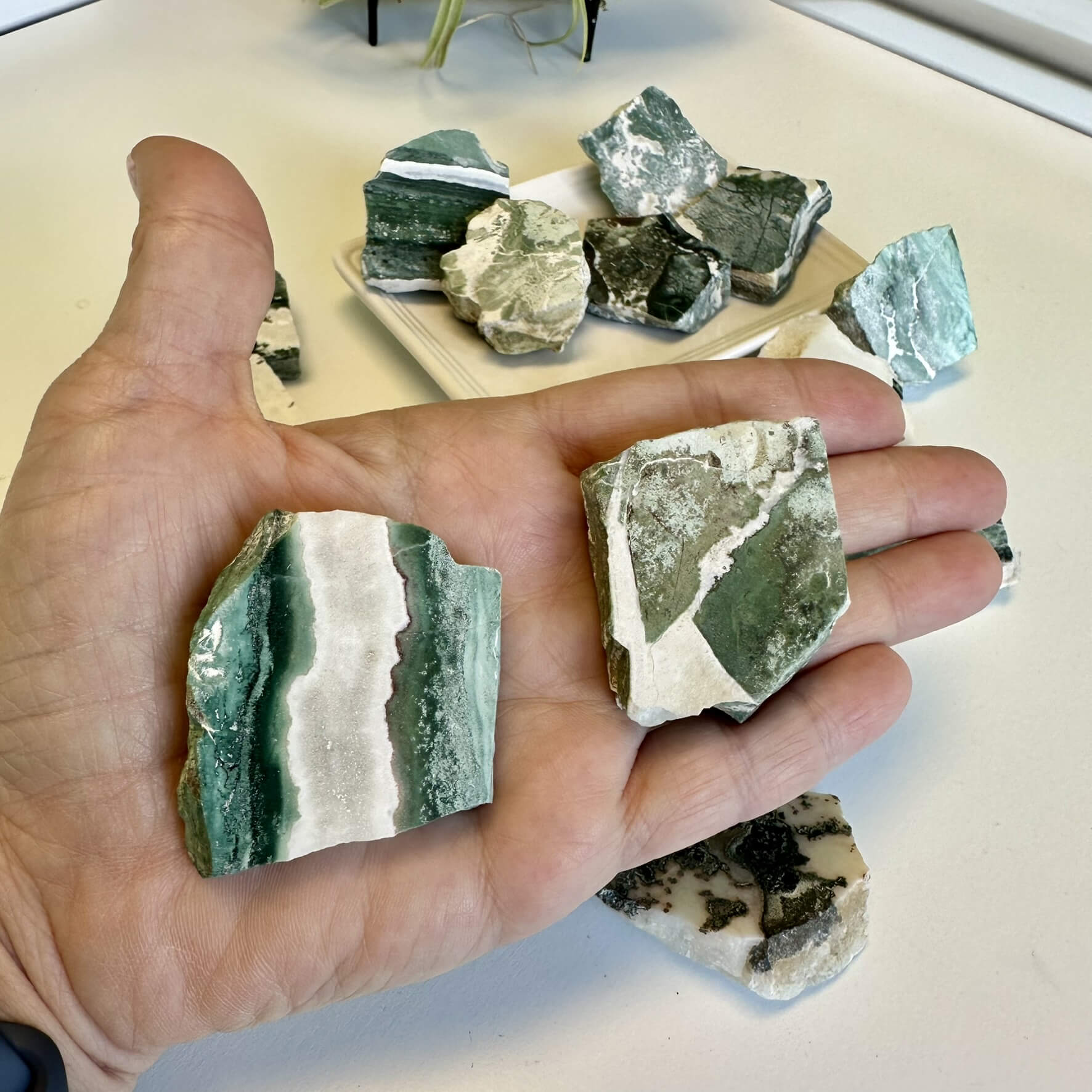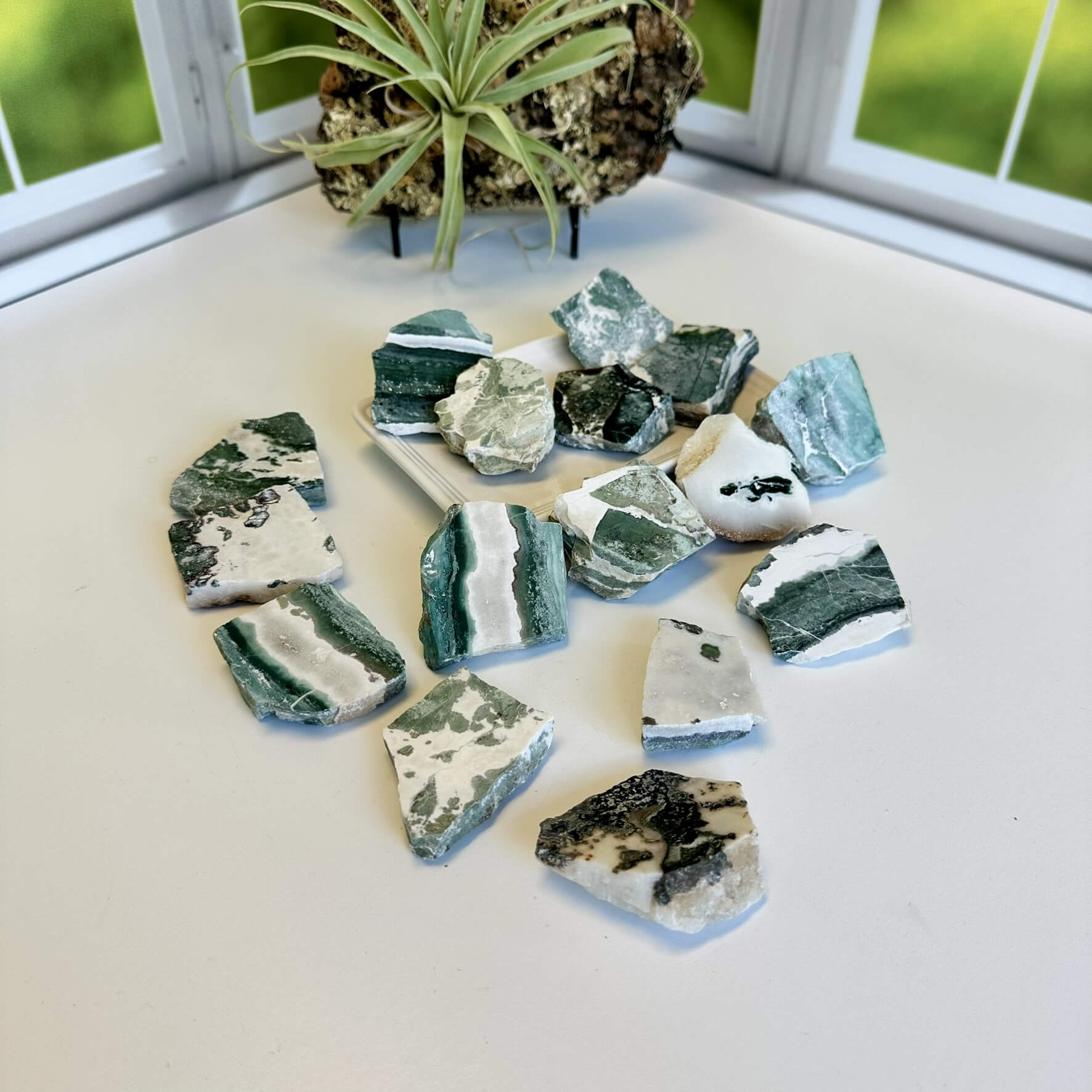
Indian Turquoise
Key Words:
Travel Protection · Horsemen’s Stone · Talisman of Success · Clear Communication · TV & Radio Careers · Aids Relaxation for Accountants
Travel Protection · Horsemen’s Stone · Talisman of Success · Clear Communication · TV & Radio Careers · Aids Relaxation for Accountants
Turquoise is one of the oldest and most beloved stones used in jewelry, trade, and talismans across ancient cultures worldwide. Its signature blue-green color is so recognizable that the name “turquoise” has come to define the entire color family.
The stone often displays delicate veining or soft mottled webbing in tones of cream, brown, or black, which only adds to its visual character and individuality. Turquoise can range in tone from powdery blue to greenish-teal, depending on its mineral content and origin.

Top Polished Sliced
The name Turquoise comes from the French term pierre turquoise, meaning “Turkish stone,” because trade routes from Central Asia brought these gemstones into Europe through Turkey. Venetian merchants commonly purchased them in Turkish bazaars.
Across many cultures, Turquoise was believed to offer protection, prosperity, and strength. In Persia, people once believed that a turquoise that caught the reflection of the moon would bring luck to its wearer. In India, it’s known as phiroza and recognized as a December birthstone.
Turquoise has long been considered a symbol of protection in travel, especially on horseback. Early Turkish horsemen used it as a charm against falls and injury—often tying pieces to their bridles and saddles. Over time, this tradition evolved into the idea that Turquoise offers protection from any kind of fall, whether literal or symbolic.
In Native American cultures, Turquoise has been used in ceremonial settings, for personal adornment, and even to guard sacred burial sites. For many tribes, it was seen as a stone of strength, guidance, and connection to the sky and spirit.

Top Polished Sliced
Turquoise has also been associated with communication and clarity of thought. It has long been considered a helpful stone for those in professions like law, government, teaching, and counseling—where accurate and calm communication is essential.
In modern times, Turquoise is still chosen by people in fields such as television, radio, and digital media, as it’s believed to help ease performance anxiety and support self-expression under pressure.
For more analytical or quiet professions—such as accountants, IT professionals, and researchers—Turquoise is thought to help relieve mental fatigue, encourage a steady pace, and support emotional resilience during long hours of focused work.
Turquoise also continues to be a favorite stone for travel. It's said to protect both people and possessions from theft or loss, and even offers guidance for pets and animals when secured to a collar or bridle. Riders still choose Turquoise as a symbol of steadiness and confidence in movement.
Whether worn as a ring or bracelet, carried during a trip, or placed near a workspace, Turquoise is a stone of strength, calm confidence, and personal protection. It’s a beautiful reminder that we can speak clearly, move steadily, and stay grounded—even through transition or change.



